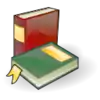Objective
|
Units of InformationComputer MemoryWhen working with a x86 computer, you'll need to know how to measure the size of memory. The difference between a byte and a word is very important to know, since you'll need that knowledge when working with a file system for example. This lesson will help you get familar with the units of information used on the x86 computer. The BitThe bit is a unit of size that can store two values, one and zero. When working with computers, data is usually stored in binary, a number system that is 2 based. A bit is basicly like a standard light switch. It's only possible values are on and off, much like a bit's one and zero values. This unit of size is important to remember when working with computers, since it is as low as you get in terms of memory size. NibbleThe nibble (or sometimes spelled nybble to match the spelling of byte) is the size of four bits. The nibble is half the size of a byte. In telecommunications and networking, a nibble is referred to as semioctet or a quartet. ByteThe byte is the size of eight bits. In telecommunications and networking, a byte is referred to as an octet. On rare occasions, a byte is sometimes called a halfword. WordThe word is one of the most ambiguous units of information in computer science. On the x86 architecture, a word is the size of sixteen bits. DwordThe Dword stands for doubleword. On the x86 architecture, a Dword is the size of thirty-two bits. QwordThe Dword stands for quadword. On the x86 architecture, a Qword is the size of sixty-four bits. Metric SystemIn addition to the sizes mentioned above, you can append a metric prefix to the unit byte or bit and create a large number in terms of bytes or bits. For example you could take the metric prefix kilo- and append it to byte and you create kilobyte, which stands for 1,000 bytes. You could also appended the metric prefix mega- to bit and create megabit. There is a table of common metric bytes and bits listed below. You probably won't need to remember anything larger than that, but who knows what the future holds.
IEC StandardsUnits of Conflict |
Assignments |
|